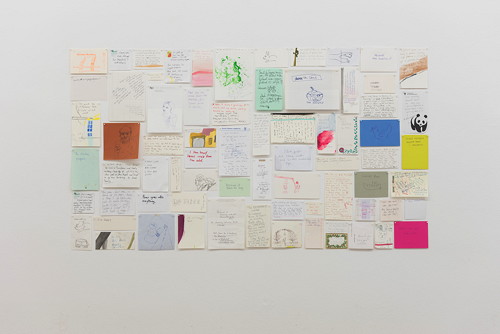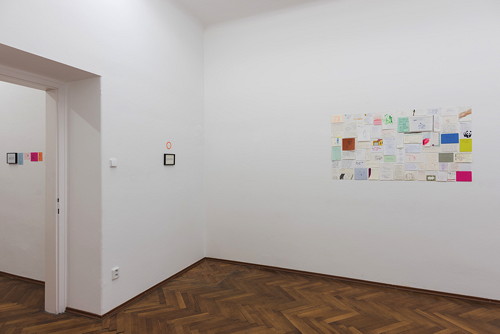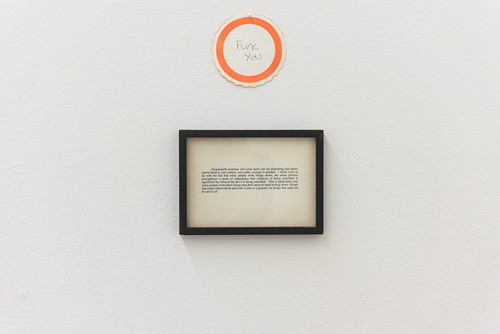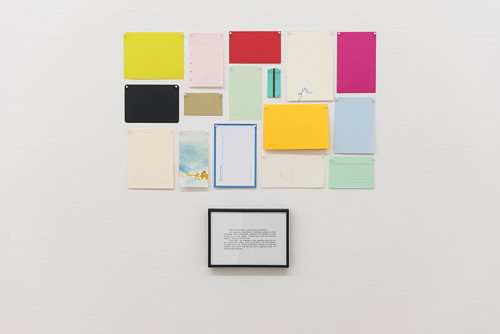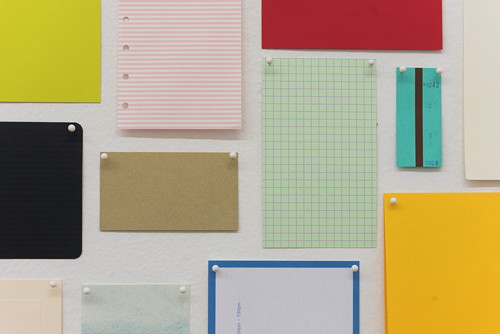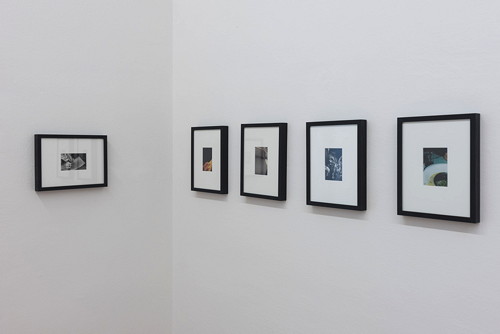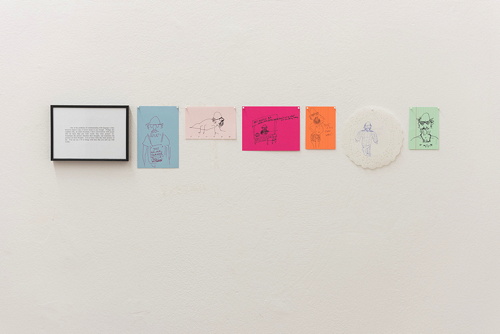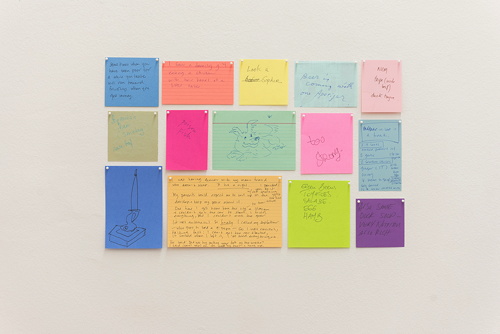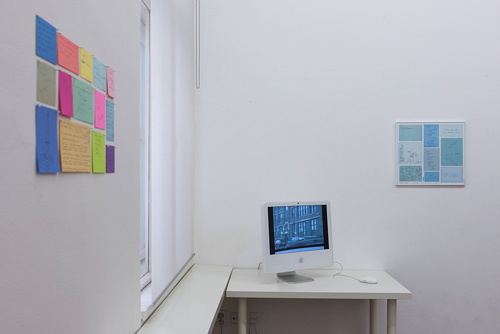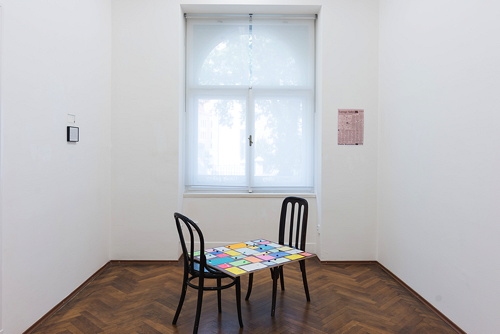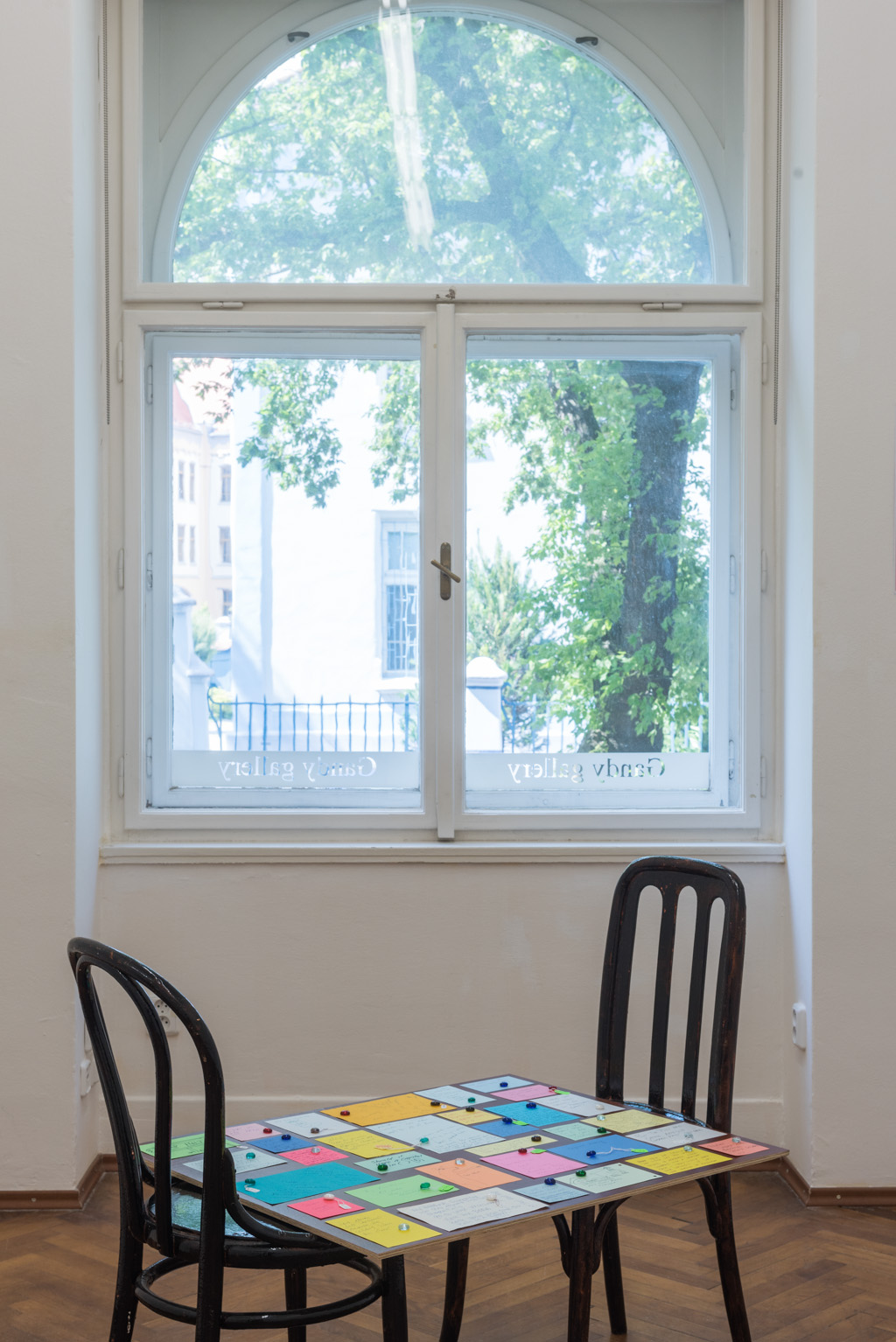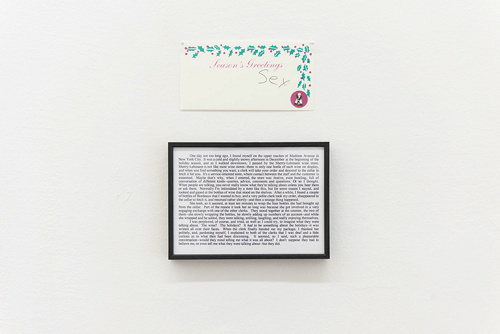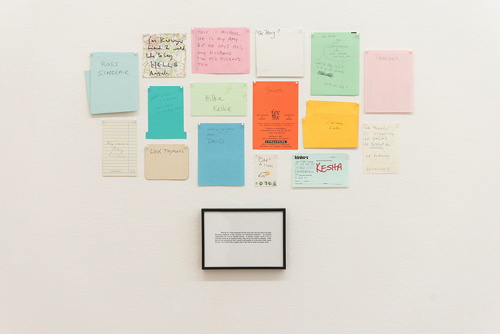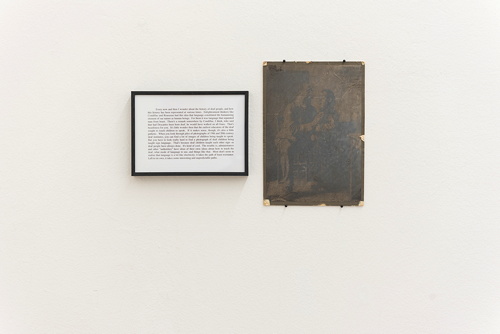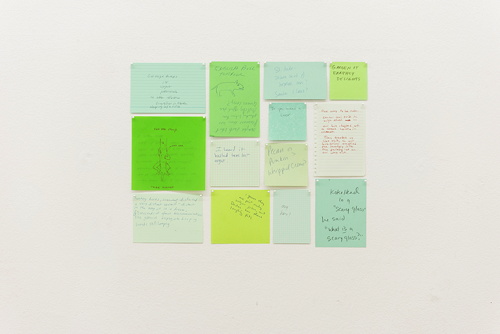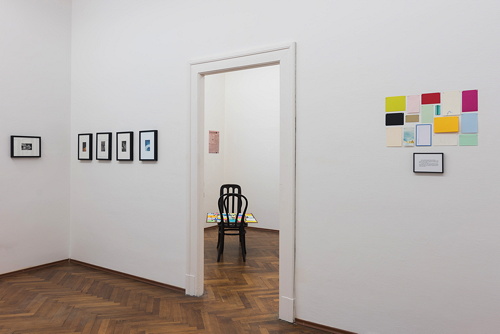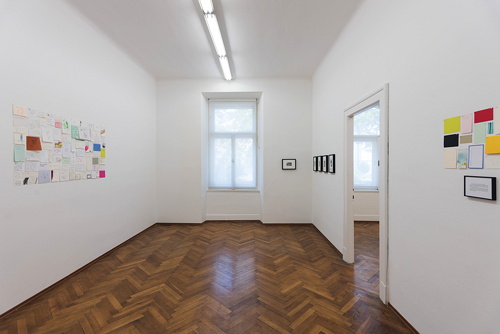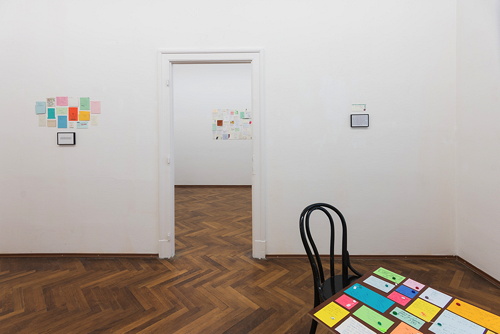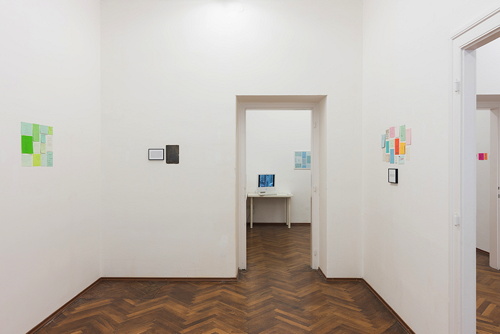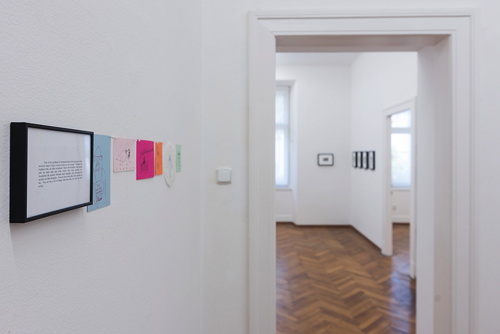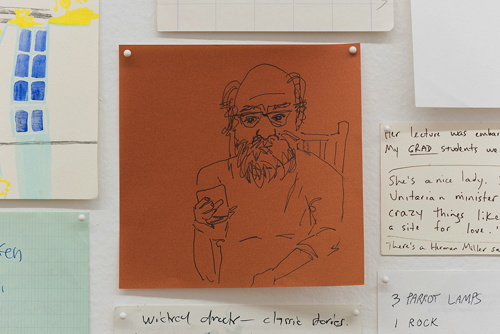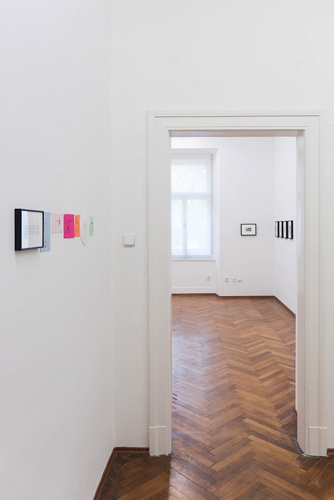Joseph Grigely
Bratislava
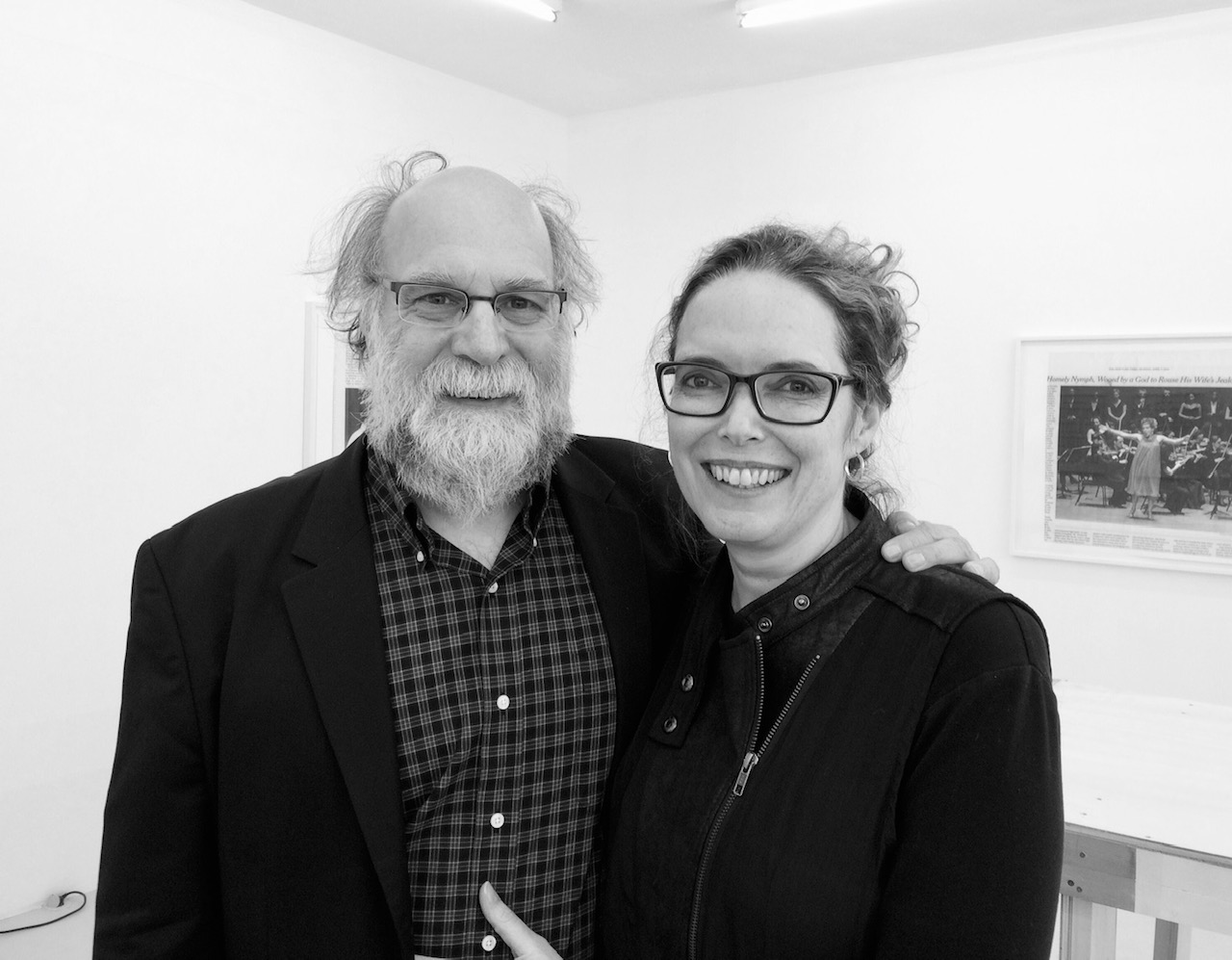
Conversations 1994 - 2016
Exhibition: May 25 - July 29, 2016
Gandy gallery is delighted to announce the third solo exhibition by Joseph Grigely at the gallery, the first survey of his work in Slovakia, a kind of return to the roots for this American-born artist whose grandparents left the Hungary region for the U.S. soon after World War One.
In the mid 1990s, Joseph Grigely started to show what he called his Conversations with the Hearing, whose material is directly germane to his deafness. These works consist of scraps of paper (metro cards, invitations, stationary, tablecloths, napkins, business cards, etc.) that were written upon by people who do not know sign language. All these Conversations produce a singular aesthetic, a refined economy of information. Like the conversation notebooks used by Beethoven's speakers after the composer lost his hearing, they offer the possibility for an archeology of discussions while providing a fiction narrative of daily life.
This unique survey of his dialogic oeuvre features works from the 1990s to the present day, from installation to photography including publications and videos. The exhibition reveals the wide range of his creativity that extends far beyond deafness to explore the limits of language as well as questioning the representations of language in the history of art.
Pierre Von-Ow
"What is it that makes a conversation a conversation?" asks Joseph Grigely in the framed statement below his Untitled Conversation. The latter is a composition of blank papers, those he carries in his pockets so that people write things down instead of telling them at loud. But a conversation is not reducible to speech. Extra-linguistic elements cannot be left aside. This is why he took pictures of the hands of his interlocutors while writing.
These Portraits, also featured in the retrospective, provide an hint about the setting and convey the intimacy of exchange through their format.
In these fifteen conversations, the context is suggested by the trace a coffee cup left behind or the subway ticket. We have some idea of an interlocutor with the name of Felix Gonzales Torres printed on the blue-and-white postcard in the lower part of the composition. The blankness of the supports itself is a starting point to fiction, kept as witnesses, as the tangible hyphens between people. They evidence that communication goes way beyond language and that legibility does not always mean intelligibility. In a sense this work, whose harmony is an obvious tribute to the abstraction and color exercises of Josef Albers, is definitely an adventure in silence."
Pierre Von-Ow
Joseph Grigely (b. 1956, lives and works in Chicago) has exhibited extensively in Europe and the U.S.. His work is in collections that include the Tate Modern, London; The Stedelijk Museum, Amsterdam; SMAK, Ghent, Belgium; the MCA, Chicago; the Whitney Museum of American Art, New York; and the Museum of Modern Art, New York. Recent exhibitions and projects took place at Grazer Kunstverein, Graz; the Serpentine, London; FRAC Île-de-France/ Le Plateau, Paris; Palais de Tokyo, Paris; Foundation Serralves, Porto; and the Centre Pompidou, Metz. His work has been shown in the Whitney, Berlin, Venice, Istanbul, Liverpool, and Sydney Biennials. In 2007, the Baltimore Contemporary and Tang Museum published a monograph on his work, Joseph Grigely: St. Cecilia. His books include Textualterity: Art, Theory, and Textual Criticism (1995), Conversation Pieces (1998), Blueberry Surprise (2006), Exhibition Prosthetics(2010) and Oceans of Love: The Uncontainable Gregory Battcock (2016).
Joseph Grigely is an artist and writer whose work addresses questions about the materialization of language and communication, and the ways conversations might be represented in the absence of speech. A collector of inscribed words, documents, and related artifacts, Grigely’s ongoing work, collectively titled Conversations with the Hearing, is concerned with archives and archival practices and how archives might be activated with formal and narrative meaning.
Artist Statement
"Some years ago I was sitting in the New York apartment of a friend having tea and a conversation. A large part of our exchange had to do with the senses, and how communication involved a wide array of possibilities outside the norm of what it means to be human. Deep into the conversation, my friend told me a story about a blind baby who had learned to imitate—perfectly—the sound of a refrigerator and the sound of a car going over gravel as it approached the house. After a long pause in which we considered the implications of this, my friend turned to me and said: “Beauty is difficult. Never forget that.”
